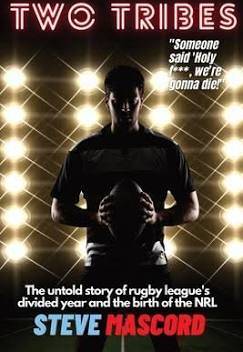 MARTYN SADLER reviews a book about the struggle for the soul of Australian Rugby League
The year 1997 was perhaps the most important year in Rugby League history since the formation of the Northern Union in 1895.
It was a year when a pay-television war in Australia drove the game to the brink and brutally exposed its vulnerabilities in both hem
MARTYN SADLER reviews a book about the struggle for the soul of Australian Rugby League
The year 1997 was perhaps the most important year in Rugby League history since the formation of the Northern Union in 1895.
It was a year when a pay-television war in Australia drove the game to the brink and brutally exposed its vulnerabilities in both hem When Rugby League went to war
 MARTYN SADLER reviews a book about the struggle for the soul of Australian Rugby League
The year 1997 was perhaps the most important year in Rugby League history since the formation of the Northern Union in 1895.
It was a year when a pay-television war in Australia drove the game to the brink and brutally exposed its vulnerabilities in both hem
MARTYN SADLER reviews a book about the struggle for the soul of Australian Rugby League
The year 1997 was perhaps the most important year in Rugby League history since the formation of the Northern Union in 1895.
It was a year when a pay-television war in Australia drove the game to the brink and brutally exposed its vulnerabilities in both hem 